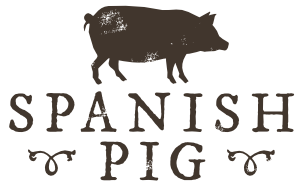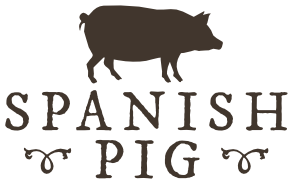
8 Essential Spanish Ingredients for any Kitchen
Fresh, colourful, delicious and healthy, Spanish cuisine has a lot in its corner. However, you do not have to live in Spain to create authentic Spanish dishes. In fact, having these eight ingredients on hand will assist you in whipping up all kinds of delectable dishes with a Spanish flair.
Spain is the World’s largest exporters of extra virgin olive oil, producing three times that of Italy, so it is unsurprisingly one of the most important ingredients in Spanish kitchens. With over 200 varieties of olives grown in the country, predominantly in Southern Spain, there are a wide range to choose from. From breakfast to dinner, olive oil is usually the first ingredient to hit the pan and in fact, it forms the base of almost all Spanish dishes. At Spanish Pig, we offer two premium types of extra virgin olive oil - Manzanilla Cacereña and Arbequina, both of which are delicious drizzled on a salad, used as a dip for bread or perfect for cooking gambas al ajillo.
Sherry Vinegar
Commonly called ‘vinagre de Jerez’, sherry vinegar is made in the town Jerez de la Frontera. It is grouped in three different categories according to the time spent maturing. These categories are: vinagre de Jerez (six months), vinagre de Jerez reserva (two years) and vinagre de Jerez gran reserva (10 years). When used in cooking, sauces and salad dressings; it gives a complex flavor coming from the depth and smoothness of the wood with the sharp acidity of the vinegar. Light and slightly sweet, it has an interesting, complex taste.
Tuna is very popular in the north of Spain. Preserved in olive oil to keep it moist and full of flavour, cans or jars of tuna from Spain are not your run-of-the-mill canned tuna used for sandwiches here in Canada. It is a quality ingredient, packed and preserved with attention to detail – an excellent ingredient for elevating a simple salad.
Considered a delicacy, sardines are much more than tiny treasures of the sea. Caught in the seas of Galica, sardines are a very healthy food, packed with beneficial amino acids, vitamins and minerals. Packed in cans of oil, water and carefully selected seasoning; sardines make versatile, quick and easy meals. They can be served with toast, as toppings for salads or as a tapa on its own.
Fuet is a sausage from the Catalan region of Spain. It is a wonderful and versatile thin, dry cured, sausage of pork meat stuffed in a pork gut or casing. It can be added to soups, casseroles or served on warm bread. Perhaps, it is most delicious when served in the most simple and traditional manner; just slice with a sharp knife and serve. Kids love fuet because it’s mild and chewy and it makes a great lunch box addition.
Another popular and key ingredient in Spanish kitchens is Marcona almonds. These rounded Spanish variety of almond have become popular in recent years. They have a buttery flavor and a moister texture than California almonds. In Spain, they’re often fried in olive oil and seasoned with lots of salt. Sometimes, they are grinded into sauces or cakes for added richness and depth. Or simply just eaten with drinks before dinner.
Grown in the eastern parts of Spain, ‘Bomba’ meaning bomb, is a short, round rice that is capable of absorbing three times its own volume and does not fall apart during cooking. It readily absorbs flavors from other ingredients; therefore, making it ideal for paellas and in other dishes of Valencian cuisine.
Paprika
Known as pimentón, paprika also has a special role in Spanish cooking. So much so that Spain produces and consumes the most paprika in the world. There are three kinds of Spanish paprika: dulce (mild and sweet), agridulce (slightly bitter and hot), and picante (spicy hot). In addition, there is another kind produced in La Vera region of Spain where farmers dry and smoke the chilies over wood fires to get a smokey flavor. This is great for giving a depth of flavor to dishes, colour and flavoring. It also acts as a condiment often sprinkled on eggs, salads, soups, stews or used in dressings and dry marinades.
Saffron
This delicate, aromatic spice is carefully extracted from a crocus plant, and the highest-quality can be more expensive than gold. Giving foods a rich golden color, it has a wonderful slightly bitter, flowery taste that is essential to Spanish cooking. When used, it gives off a rich crimson color. It is a popular addition to many Spanish paella recipes. In fact, it is the spice that gives paella rice a golden yellow hue. Additionally, it is added to stews, soups and sauces of all kinds as well.
With these essentials in your kitchen, you can’t go wrong when experimenting with Spanish cuisine!
Share



